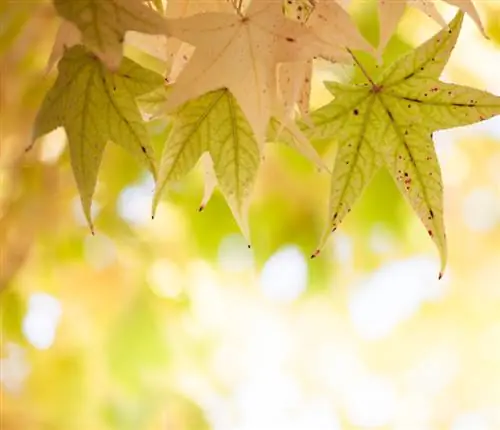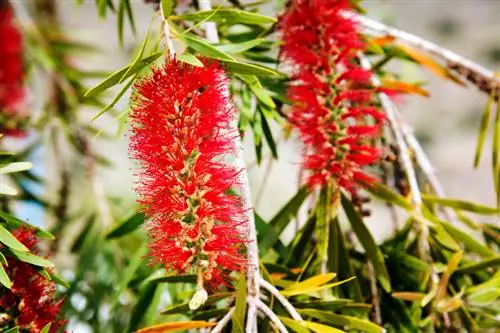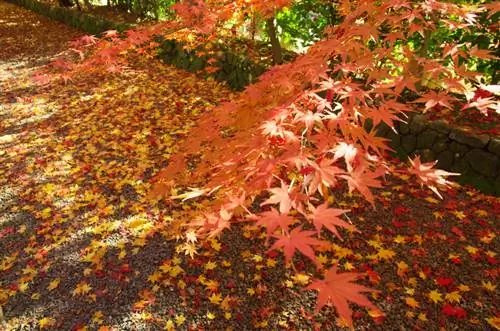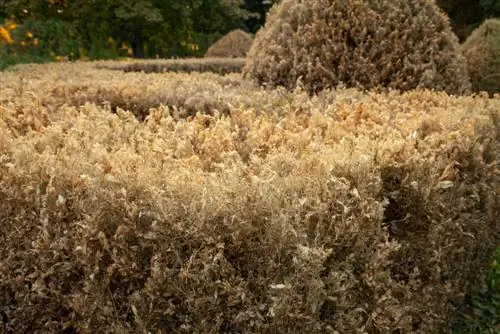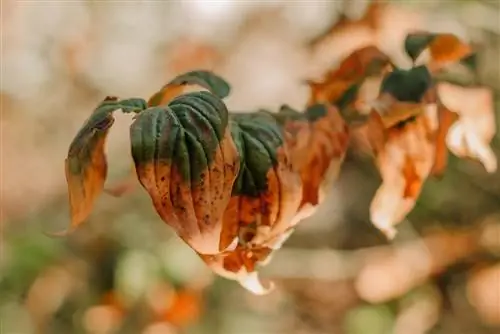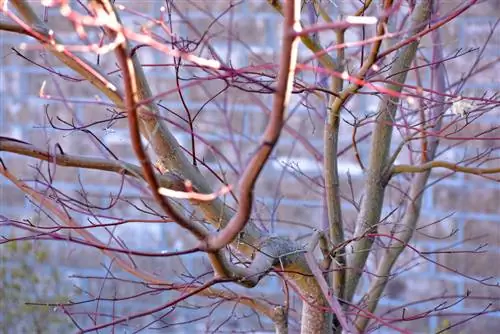- Author admin [email protected].
- Public 2023-12-16 16:46.
- Last modified 2025-01-23 11:20.
If Japanese maple suddenly shows dried leaves and withered shoots, the dangerous verticillium wilt is often behind it - especially when the water supply is actually optimal. The exotic trees can only be saved with luck, because there is currently no effective remedy against the wilt disease.
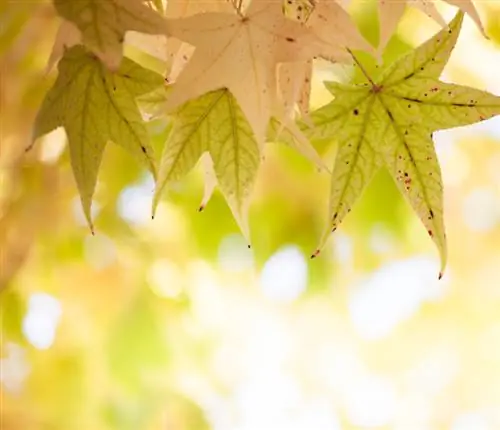
Why does my Japanese maple have dry leaves?
Dry leaves on Japanese maple can be caused by verticillium wilt, a fungal infection. This leads to withering shoots and dried out leaves. Treatment methods include generous removal of infected parts of the plant and moving the maple to a new location.
Verticillium wilt is often behind dry leaves
Dry branches and dried leaves, which develop especially in mid-summer when the weather is warm and dry, are often a sign of an infection with the verticillium fungus that lives in the soil. This penetrates the plant's wood via the pathways and hinders an adequate supply of water and nutrients. As a result, the tree slowly begins to die and the fungus continues to spread. The wilt disease usually moves from bottom to top and from the base to the tips of the shoots.
Disease and symptoms
The first sign of wilt disease is often necrotic - i.e. dead - leaf edges, which can sometimes be confused with sunburn, especially in the initial phase. However, this generally affects all leaves in the sun and not just individual shoots. The leaves continue to dry out, branches wither and die. The wilt disease can undoubtedly be identified if you remove such a branch and cut it once. The actually light wood is interspersed with dark spots and dots. This is the actual mushroom network.
Weakened trees particularly vulnerable
Japanese maples that are weakened by incorrect location and/or inappropriate care are particularly susceptible to infection with verticillium wilt. In particular, a location that is too moist or waterlogged, but also very dense and oxygen-poor soils, prove fatal.
Fighting verticillium wilt
Unfortunately, there is still no effective fungicide that can be used to combat wilt disease - since the fungus is firmly embedded in the wood, it is well protected from such agents. Instead, you must cut off affected parts generously and immediately dispose of them with household waste or burn them. However, infected material must under no circumstances be put on the compost, otherwise the disease can spread further. It is also recommended to replant affected maples. After all, the pathogen is in the soil, so new infections are always possible.
Tip
However, dry leaves can also have other causes, such as too much water / drought or sunburn.

